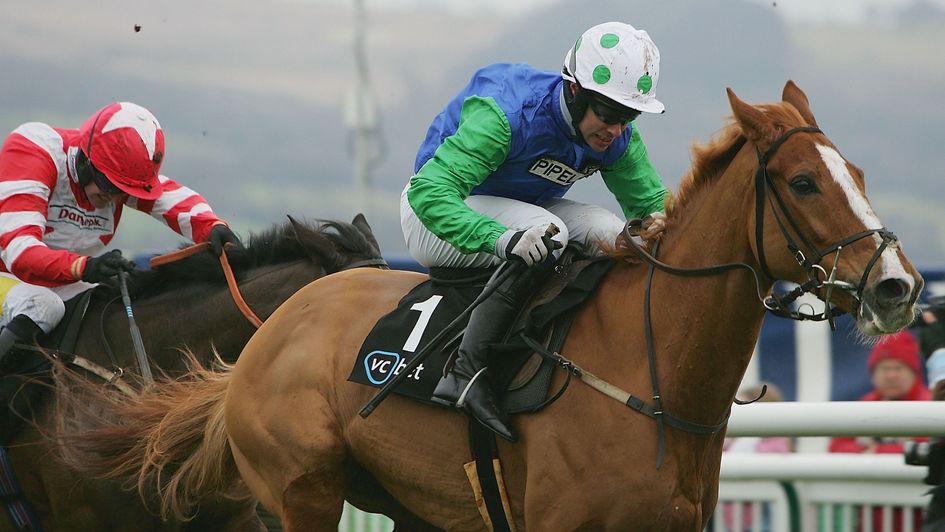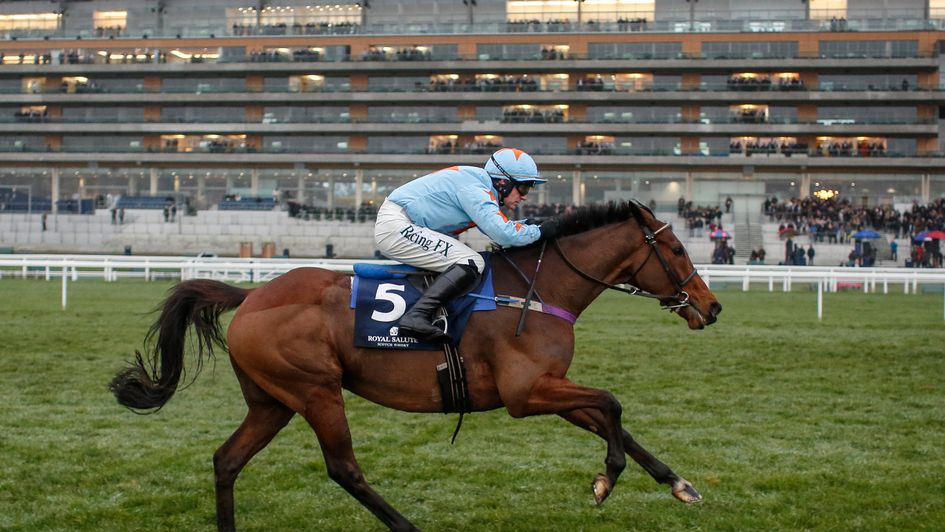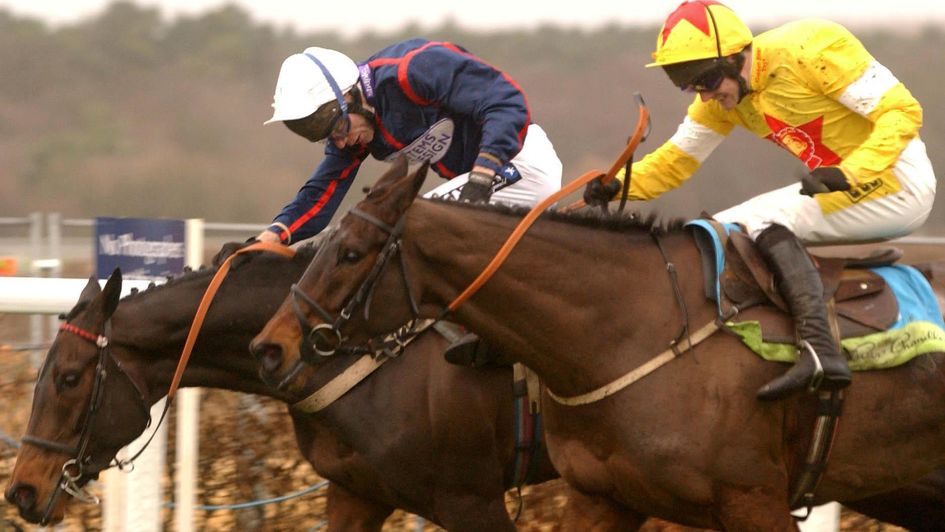John Ingles traces the development of a race which as both a handicap and a Grade 1 contest has been won by some top two-mile chasers despite the winter weather often doing its worst.
In the beginning
First it was frost, then it was fog. The sponsors of a new, valuable two-mile handicap at chase, to be run at Ascot in January, must have been left questioning the wisdom of backing a race in midwinter after the weather had put paid to the first two renewals of what started out as the Victor Chandler Handicap Chase. Finally, at the third attempt in 1989, they got a race, and it proved well worth the wait.
Not only did it attract the biggest name in jumping at the time – Desert Orchid, fresh from his second win in the King George – it was a thrilling contest which saw David Elsworth's horse put up one of his finest performances in a handicap. In a memorable finish, Desert Orchid, carrying 12-0 and conceding 22lb to Panto Prince, rallied for a head win – ‘Dessie’s fighting back like a tiger!’ said Peter O’Sullevan in commentary - after the pair had dominated throughout. Two starts later, the remarkably versatile Desert Orchid won the Cheltenham Gold Cup.
Bizarrely for a two-mile handicap, the future Gold Cup winner was in the field again a year later, only this time you would have done well to pick him out. The horse in question had finished last of six on his previous start when Desert Orchid won the King George again, and trailed home ninth of ten as the 20/1 outsider of the field in the Victor Chandler under just 10-0. Later that season, Norton’s Coin went on to create the biggest shock in Gold Cup history when winning at 100/1 with Desert Orchid back in third.
Key pointer for the Festival
More in keeping with the race’s distance, it wasn’t long before the Victor Chandler began to throw up Queen Mother Champion Chase winners. Viking Flagship in 1994 was the first to win both races (he won the Champion Chase again a year later), though his Victor Chandler win came at Warwick when the weather intervened again at Ascot. A year later Martha’s Son won the Victor Chandler (Viking Flagship was fifth under 12-0), though it was to be another two years before he landed the Champion Chase. And in 1999, Call Equiname returned from over a year off the track to give Paul Nicholls a first win in the Victor Chandler (staged at Kempton this time) before doing the same in the Champion Chase.
Another trend in the early years of the Victor Chandler was the success of northern stables. Jimmy Fitzgerald won it twice, with Meikleour in 1990 and Sybillin in 1993, with Tom Tate (Ask Tom), Mary Reveley (Function Dream) and Tim Easterby (Turgeonev) all successful in the next ten years.
In its handicap form, there were some other memorable weight-carrying performances to go with Desert Orchid’s, and not just by the winners. Cheltenham staged the race in 2005 when Ascot was being refurbished, and Well Chief, who had come off worst against two other outstanding two-milers Moscow Flyer and Azertyuiop in the Tingle Creek earlier in the season, put up a top-class effort to win under 11-10 with most of his rivals out of the handicap.
A year earlier, Azertyuiop, also under 11-10 and with only two rivals in the handicap in a record field of 13 for the race, failed valiantly by a neck to concede 19lb to the Nicky Henderson-trained winner Isio. In another epic renewal reminiscent of that first edition won by Desert Orchid, the top-weight might have come off worse this time, but it was still one of the best handicap performances since the days of Desert Orchid, earning Azertyuiop an outstanding Timeform rating of 182. He went one better later in the season when beating Flagship Uberalles in the Queen Mother Champion Chase.
Viking Flagship’s half-brother Flagship Uberalles had himself been beaten a neck under top weight of 11-10 in another cracking renewal of the Victor Chandler in 2000. Trained at the time by Paul Nicholls, the Joe Tizzard-ridden Flagship Uberalles lost out to the Venetia Williams-trained Nordance Prince who had just 10-0 – most of that Tony McCoy – on his back. Flagship Uberalles eventually won the Champion Chase two years later, by which time he had joined Philip Hobbs.

From handicap to Grade 1
There were some terrific renewals of the Victor Chandler Handicap, therefore, but, in a way, the handicap format of the race became a victim of its own success. The fact that it was regularly being contested by top-class two-mile chasers suggested, to the Ascot authorities at least, that there was a need for a mid-season Grade 1 contest for the top two-milers between the Tingle Creek (which had itself formerly been a handicap) in early-December and the Cheltenham Festival.
As a result, the first running of the Victor Chandler as a Grade 1 level-weights contest took place in 2008 and was won by the David Pipe-trained Tamarinbleu. Inevitably, double-figure fields have become a thing of the past in the race’s new form. The sponsors didn’t get their wish to return the race to a handicap, and the last running of the race as the Victor Chandler Chase took place (at Cheltenham) in 2013 when it was won, like the very first renewal, by one of the greats, Sprinter Sacre. Subsequently, the race has been run under its registered title as the Clarence House Chase under a variety of sponsors.
Sprinter Sacre is just one of the more recent Clarence House winners to have also won the Champion Chase. Master Minded won at Ascot on the way to winning his second Champion Chase in 2009 and then became the first dual winner of the Clarence House in 2011. Sprinter Sacre was the first of three consecutive Clarence House winners to win the same season’s Champion Chase, followed by Sire de Grugy, and Dodging Bullets who beat the odds-on Sprinter Sacre at Ascot on his return from injury in 2015.
For the next three years, the Clarence House was dominated by Un de Sceaux, who was odds-on each time, with the middle leg of his hat-trick taking place at Cheltenham in 2017 after Ascot’s abandonment the week before. Un de Sceaux went on to win the Ryanair at the Festival that same season but was beaten at odds on by Sprinter Sacre in 2016 when contesting his only Champion Chase. Incidentally, no fewer than five different Clarence House winners contested the Champion Chase that year, with Somersby (the 2012 Ascot winner), Dodging Bullets and Sire de Grugy also in the field.

Recent history
Having missed the race in 2019, Un de Sceaux made what turned out to be the final start of a tremendous career for Willie Mullins when beaten by Defi du Seuil, five years his junior, in the 2020 Clarence House. The 2019 edition of the Clarence House was certainly the poorer for Un de Sceaux’s absence, with Altior winning the least competitive renewal in the race’s history at odds of 1/10 against two rivals on the way to winning his second Queen Mother Champion Chase.
Defi du Seuil was unsuccessful in his bid to retain his title in 2021 when the most competitive recent renewal of the Clarence House was won by 14/1 shot First Flow. He too was back 12 months later but played only a minor role in a memorable contest which, as the betting suggested, essentially boiled down to a match between the two outstanding two-mile chasers in training, Shishkin and Energumene, both unbeaten over fences at that stage of their careers. Energumene went with his usual zest in front but couldn’t repel the late challenge of stronger stayer Shishkin who got up to beat him a length. Energumene gained his revenge on his Nicky Henderson-trained rival in that season’s Queen Mother Champion Chase, becoming a belated first winner of the race for Mullins and winning it again last March.
Energumene’s only defeat last season came in the Clarence House again, finishing third to Editeur du Gite in another renewal which had to be run at Cheltenham because of the weather. But assuming this year’s race goes ahead as planned at Ascot on Saturday, it’s looking very reminiscent of the last renewal there two years ago, with two heavyweights, the one-two in last year’s Sporting Life Arkle – El Fabiolo and Jonbon – again trained by Mullins and Henderson, dominating the betting in a field of four.
More from Sporting Life
- Racecards
- Fast results
- Full results and free video replays
- Horse racing news
- Horse racing tips
- Horse racing features
- Download our free iOS and Android app
- Football and other sports tips
- Podcasts and video content
Safer gambling
We are committed in our support of safer gambling. Recommended bets are advised to over-18s and we strongly encourage readers to wager only what they can afford to lose.
If you are concerned about your gambling, please call the National Gambling Helpline / GamCare on 0808 8020 133.
Further support and information can be found at begambleaware.org and gamblingtherapy.org.










